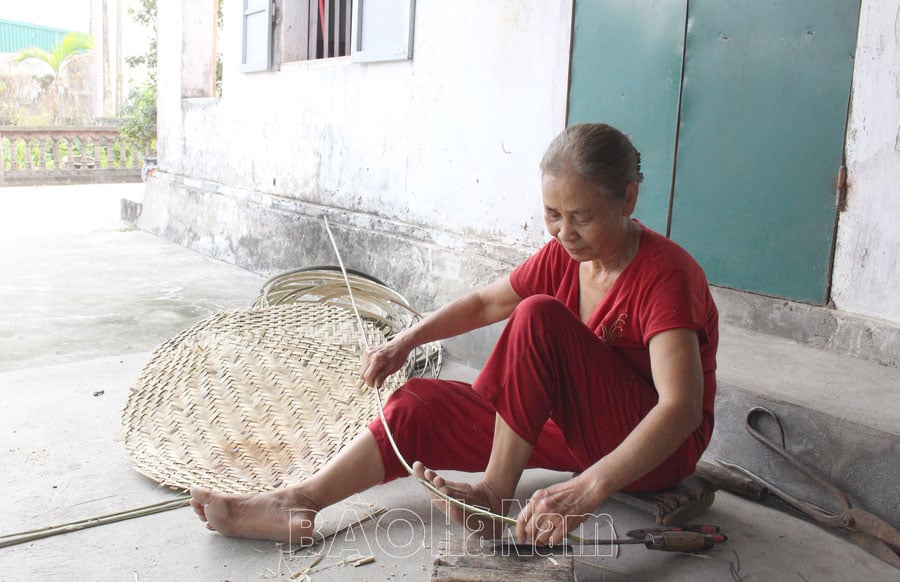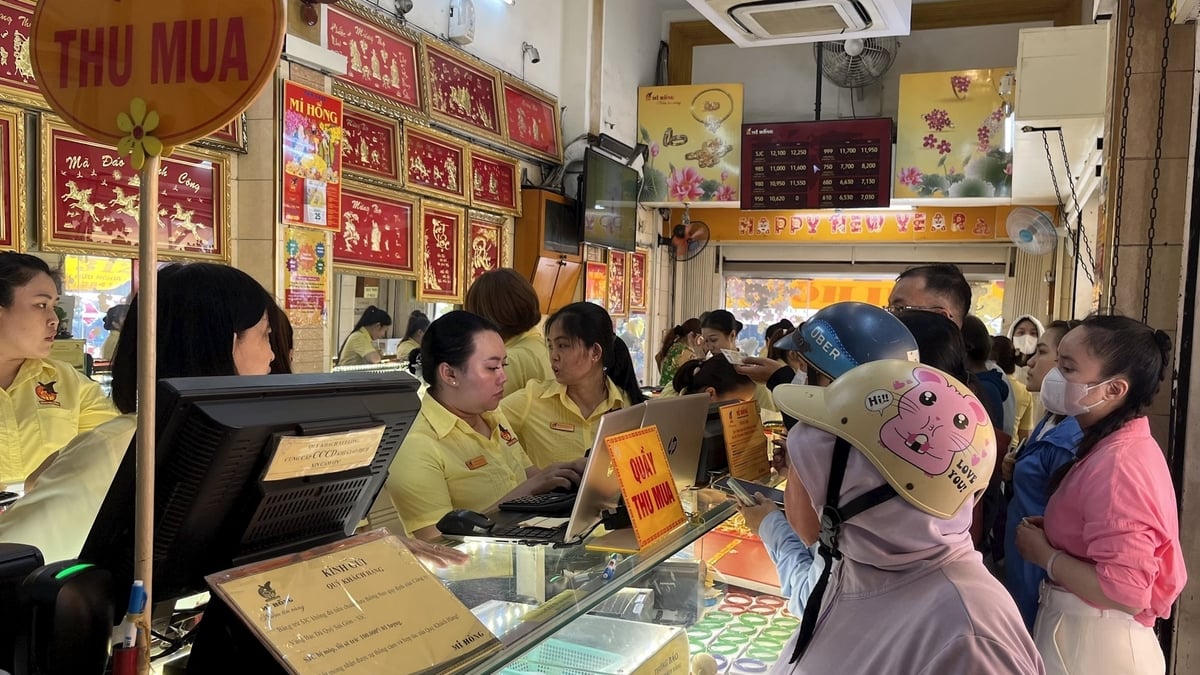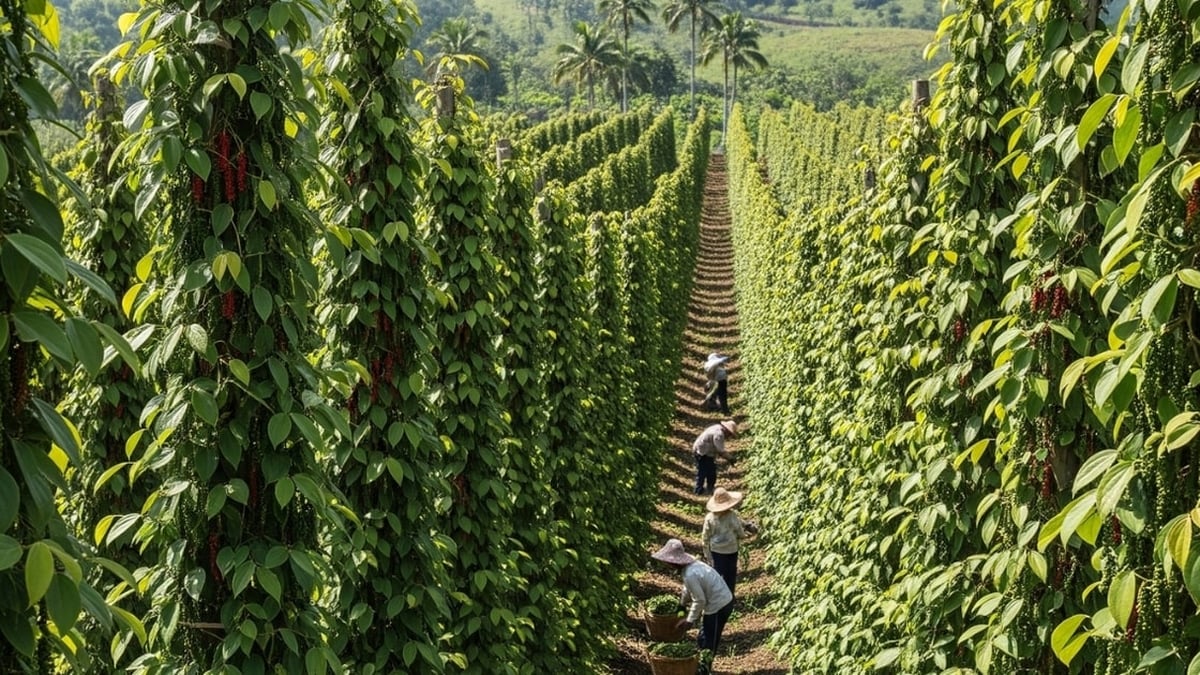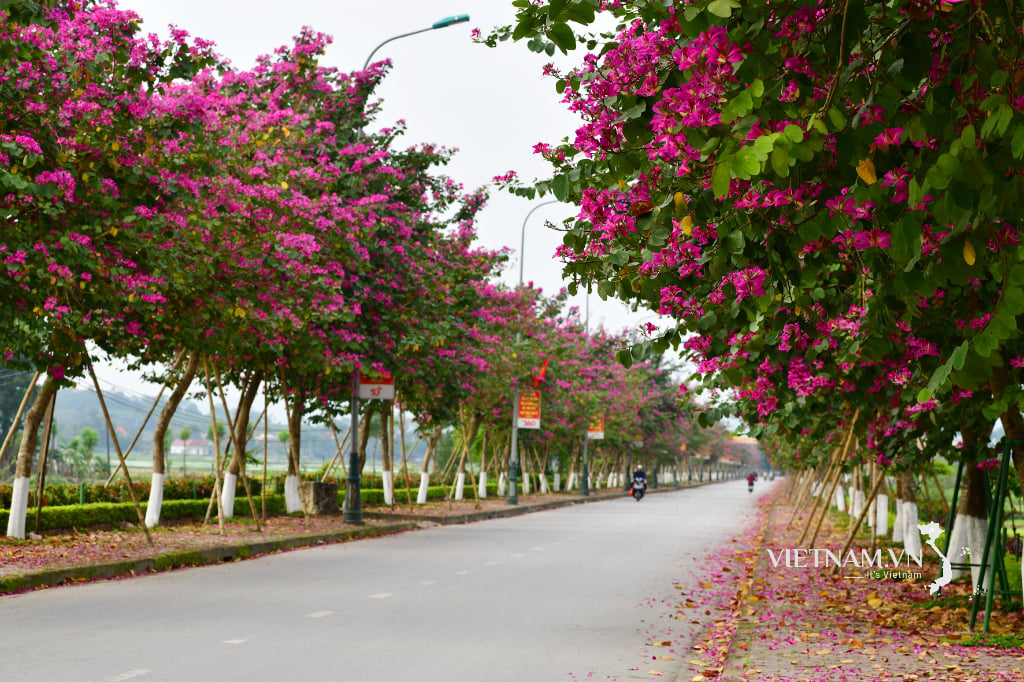In the province, there are currently 32 traditional craft villages and 26 recognized craft villages operating in the following groups of occupations: processing and preserving agricultural, forestry and aquatic products; handicraft production; production of wooden products, rattan and bamboo weaving, ceramics, textiles, yarn, embroidery, weaving, small mechanics; production and trading of ornamental plants. Among them, rattan and bamboo weaving, embroidery, weaving, production and trading of ornamental plants, small mechanics... are the groups of occupations facing the most difficulties and challenges. Many craft villages are facing the risk of extinction as the number of households participating in the craft is increasingly shrinking. For example, in the group of rattan and bamboo weaving and weaving (including 12 traditional craft villages), in these craft villages, the number of people participating in the craft is not much because people have many other job options with higher incomes, market demand is decreasing due to the popularity of alternative products made of plastic, stainless steel...
For example, in the traditional bamboo weaving craft village of Goi Thuong (Hamlet 3 An Noi, Binh An Commune, Binh Luc), if in the past, almost 100% of households in Goi Thuong hamlet participated in the craft with the labor force being students, young people, middle-aged people, and the elderly, now, the whole hamlet has only about ten households with more than 20 elderly workers sticking to the craft. Perhaps, this is also the last generation doing bamboo weaving in Goi Thuong. The main products of the craft village are baskets, trays, trays, winnowing baskets, etc. serving the construction, production and consumption sectors. According to Mr. Do The Vinh, Head of Hamlet 3 An Noi, the bamboo weaving craft in Goi Thuong has existed for a long time. About ten years ago, in its "golden age", the craft village helped people in Goi Thuong have a stable source of income, many households even got rich from the craft. At that time, villagers mainly wove baskets to sell to construction sites, lime kilns, coal and stone mining areas throughout the province. In addition, some products such as baskets, trays, and winnowing trays were sold at markets to serve agricultural production and daily life. However, in the past 5-7 years, the craft has gradually faded away. The reason is that the product designs are not diverse, the consumption market is limited to the commune and some neighboring localities. In addition, plastic products are increasingly widely used to replace woven bamboo, making the products difficult to sell, and workers are no longer passionate about the profession. Another difficulty is that the investment in machinery for production is not uniform, the villagers mainly do processing, so productivity is not high, and labor days are low.

Similarly, in Ly Nhan district, the bamboo production group for construction, production and consumption is also facing the "problem" of product output. According to the Department of Agriculture and Environment of Ly Nhan, in the district there are 2 traditional craft villages weaving mats in Dao Ly commune, 1 traditional craft village weaving baskets, winnowing baskets, etc. in Van Ly commune, 4 traditional craft villages making blinds in Vinh Tru town. The products of the craft villages are quite diverse, consumed in the area and neighboring provinces. However, in recent years, the craft villages in this industry group have gradually faded away. These craft villages are creating jobs for about 1,000 workers, mainly people outside of working age.
Ms. Do Thi Thu Hoa, Head of the Department of Agriculture and Environment of Ly Nhan district, said: Like the bamboo production group, the small mechanical craft village is also struggling to find ways to preserve the profession. About ten years ago, the mechanical craft village in Mai Xa village 3, Vinh Tru town was famous throughout the region for its products serving life and agricultural production such as knives, hoes, sickles, shovels, etc. Nearly 100% of households in the village participated in the craft. All the products produced were consumed, so the life and income of the villagers were quite good. However, currently, the craft village only has about 20% of households working in the craft, creating jobs for more than 100 workers. Most of the people of working age work as workers in industrial parks and clusters in the area.
According to the assessment of the Department of Agriculture and Environment, most production facilities in craft villages have small production scales, making it difficult to expand and develop. Most handicraft products are completely handmade, with simple designs, and not many products have created brands, making it difficult to compete with similar products on the market. The number of workers in craft villages is on a sharp downward trend. Although the income of craft villages has increased compared to before, it is still low compared to the working days in enterprises, industrial parks and clusters. Faced with this situation, the Provincial People's Committee has issued a plan to preserve and develop craft villages in Ha Nam province for the period 2021-2030. Accordingly, in recent times, the province has paid special attention to the recognition of titles of artisans, skilled workers, and typical rural industrial products, and implemented many projects to support the application of advanced machinery and equipment in the production of handicrafts. Along with that, doing a good job of registering intellectual property protection for craft village products; Support craft villages to participate in introducing and displaying products at fairs and exhibitions in and outside the province to seek and expand consumer markets...
To maintain and consolidate traditional craft villages in operation, in the coming time, the province will direct the strengthening of trade promotion of craft village products, especially on digital technology platforms; building and developing brands for craft village products associated with the One Commune One Product (OCOP) Program. Along with that, focusing on training human resources, establishing and improving the quality of production and business associations, cooperatives, and enterprises in craft villages; improving technology, bringing new and advanced technology into production to increase the value of craft village products...
Nguyen Oanh
Source: https://baohanam.com.vn/kinh-te/nganh-nghe-nong-thon/nhieu-lang-nghe-truyen-thong-truoc-nguy-co-mai-mot-156134.html



































































































Comment (0)